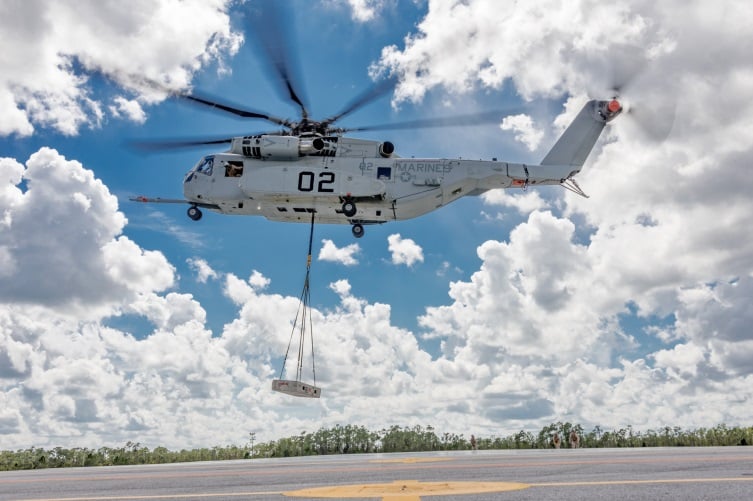
NATIONAL HARBOR, Md. – With the CH-53K King Stallion on track to be declared ready for U.S. Marine Corps operations in 2019, builder Sikorsky Aircraft Corp. is now eyeing future international customers.
A key demonstration of the heavy lift helicopter’s capabilities is scheduled for later this month in Berlin, with military officials from Germany and Israel expected to be chief among the Lockheed Martin company’s list of guests to impress, according to the Marine Corps. CH-53K program officials plan to showcase the CH-53K’s lifting ability, upgraded controls, and long-term availability for international customers.
“Israel and Germany on the same timeline. They’re looking for aircraft in the early ‘20s, ‘24 or ’25. They both expressed interest in the 53-K. We’ve had multiple engagements with the Israeli’s and Germans,” said Col. Hank Vanderborght, the Marine Corps. CH-53K program manager said on Monday at the Navy’ League’s Sea Air Space 2018 exposition.
Officials from both countries are interested in the program status, what the King Stallion can do, and how much it costs. Right now, the flyaway cost per airframe is about $87 million, Vanderborght said. The program is on schedule, with an initial operational capability expected in December 2019, and a first deployment to occur in late 2023 or early 2024.
Attendees at the Berlin air show are expected to see how the CH-53K can lift large payloads, including those loaded on standard transport plane pallets, and see how the aircraft can hover and fly backward with minimal hands-on control from the pilot, said Michael Torok, Sikorsky’s vice president of Marine Corps systems.
The showcase is important for Sikorsky because both nations are reportedly also considering purchasing the Boeing CH-47 Chinook, Torok said. Israel is also considering purchasing the Bell Boeing made V-22 Osprey.
Sikorsky is also promoting its integrated health management system, embedded into the CH-53K, Torok said. This system can monitor parts on the aircraft, allowing Sikorsky and military technicians know when servicing is required. Doing so, Torok said, will help control the cost of operating the aircraft during an anticipated 30 to 40-year lifetime.
“Historically, we’d give a helicopter to the user and we’d have no idea what they would do with the aircraft,” Torok said.
“We no longer just make money by delivering spare parts, now we actually make money by delivering availability and capability.”





